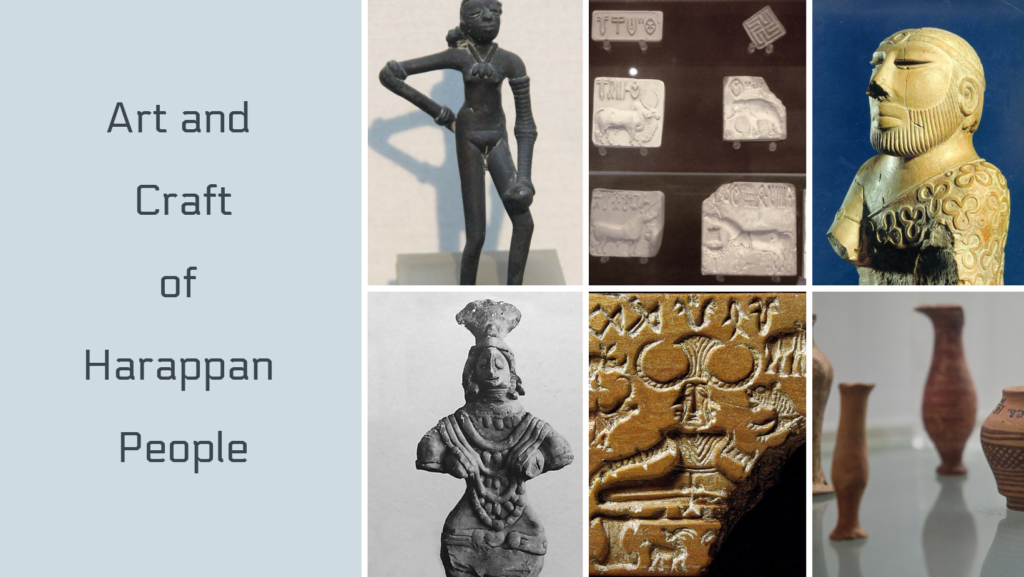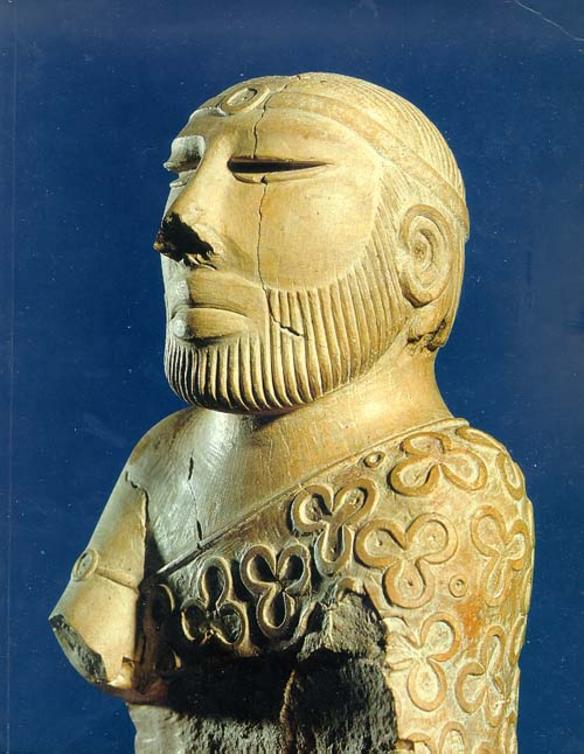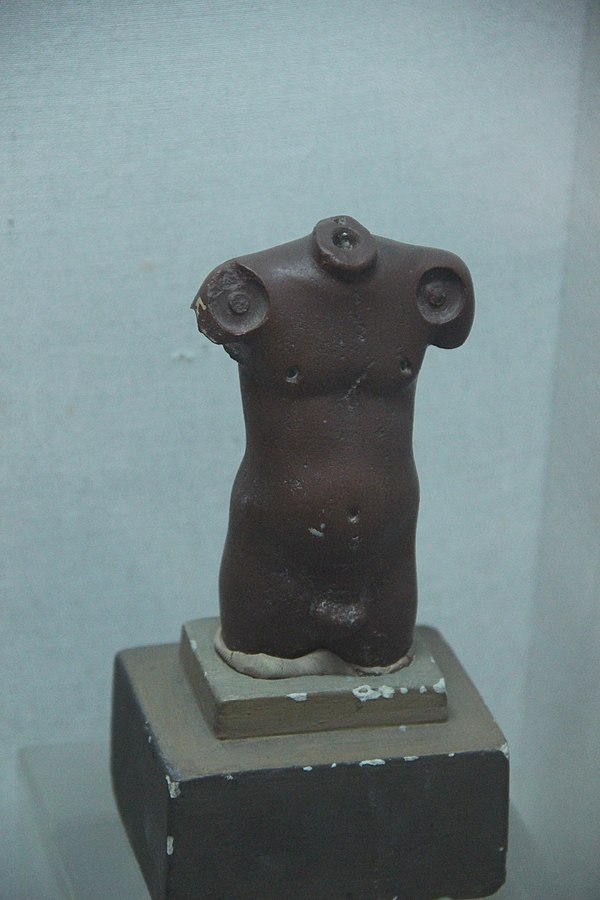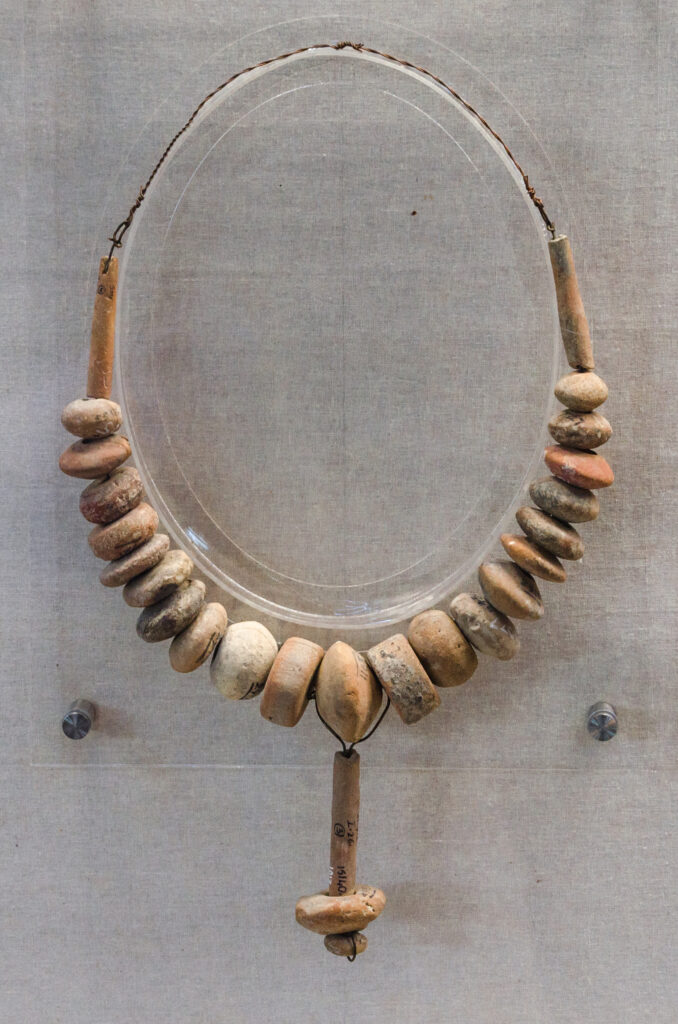
Harappans were more creative than any other ancient civilization, their art and craft are considered the world’s oldest. They gave us a lot of information about their life and their belief. Their art related to human and animal figures are life alike and completed with a master level of skill and caution. The different form of art includes pottery, sculpture, seals, beads, ornaments, and terracotta figures.
In recent years, we are able to understand the technological sophistication and beauty of some of the Harappan artifacts. we are able to find a great variety of standardization and mass-produced craft in Harappan sites. The artifacts are far greater in quality and range and show greater technical knowledge than those in earlier culture phases. Some small settlements specialized in the production of single or few items, other big cities manufactured a wide range of goods. In Gujarat and Kalibangan, terracotta statues are more lifelike.
Pottery
Harappan Pottery is a good example of mass production. Pottery kilns were found in Harappa, Mohenjo-Daro, Nausharo, and Chanhudaro. Most of the pottery was wheel made only a few were hand-made. Plain pottery is more common than the printed one.
Variety of pottery
- Harappans used funnel-shaped up-draft closed kilns to fire the pots, Sometimes they also used open-firing kilns. There is a great variety of Pottery, including black-on-red, Grey, buff, and black-and-red-wares.
- Harappan Pottery is a fine, sturdy, wheel-made ware with a bright red slip, decorated with painted black designs.
- Polychrome painting is rare. The red color for the slip was made from the red ochre (iron oxide, known as geru), while black was made by combining dark reddish-brown iron oxide with black manganese.
- The distinctive shapes include the dish on the stand, a vase with s Profile, a small vessel with knobbed decoration, large slander-footed bowl, a cylindrical perorated jar, and a gobbet with a pointed foot.
- The decorative pattern ranges from simple horizontal lines to geometric patterns and pictorial motifs. Some of the designs such fish scale, pipal leaves and interesting circles. Human and animal figures are rare.
Although there is a certain level of uniformity in Pottery styles and techniques across the Harappan culturizing, there are also differences between regions.
Functions of the Pottery
We can make the assumption about the functions of some of the Harappan pots.
- They might use large jars to store grain or water.
- The more elaborately painted pots may have had ceremonial use or may have belonged to rich people.
- Small vessels might be for drinking water or other beverages.
- The function of the perforated jars is not clear. One assumption is that Harappan may have used it for brewing fermented alcoholic beverages or may be useful in ceremonial services.
- Shallow bowls probably held cooked food.
- Flattish dishes are used as plates.
- Pots for cooking are found in many different sizes, most of them have a red or black slipped rim and rounded bottom. The lower part of the bottom often strengthened by the thick slurry or clay mixed with ground pottery. The rims of the cooking pots are strong and project outwards to help pick them up to move them around.
Sculpture
Harappan sculpture is profusion of terracotta. They made figures of animals such as bulls, buffalos, monkeys, and dogs. There was also a toy cart with solid wheels. Human figurines include male and numerous female figurines of various types. The Harappan craftsman also made terracotta Bangles.
A few remarkable examples of the Harappan craftsman ships and skill in sculpture are below:
1. Priest Man – Priest king

The figurine of a bearded guy covered in a shawl comes under the right arm and covers the left shoulder, indicating that it is a priest. He looks in contemplative concentration with his eyes extended and partially close. Overall, there is a hint of the Greek style in the statues.
2. Male torso

The male torso is a Red sandstone figure. It has a socket opening for the attachment of his head and arms, broken legs, nicely browned shoulders, and a little protruding belly. It is one of the more expertly cut and polished piece
3. Dancing girl and Bull from Mohenjo-Daro

The dancing girl is a fine example of a bronze sculpture. Harappans were using Bronze casting at a very large scale. They were using the lost wax technique to cast the bronze.
Lost wax technique: At first, the required figure is formed of wax and coated with clay. After allowing the clay to dry, the entire assembly is heated to melt the wax within the clay. The melted wax was then drained out of the clay section through a small hole. The molten metal was then poured into the hollow clay mold. The clay coating was fully removed once it had cooled.
The Bronze casting includes both human and animal representations.
The buffalo, with its raised head, back, and sweeping horns, and the goat, among animal representations, are aesthetic assets.
4. Mother goddess

- Another important scripture includes terracotta figures of bearded males with coiled hairs. Their stance is firmly erect, legs slightly apart, and arms parallel to the sides of the torso. The fact that this figure appears in the same posture over and over again suggests that he was a divinity.
- Another scripture found is the clay mask of a horned god.
Harappans used terracotta to make toy carts with wheels, whistles, rattles, birds and animals, gamesmen, and discs.
Seals

- One of the most important crafts of the Harappan people was Seal making.
- Mostly Seals were square and rectangular.
- The average size of the square Seals is about 2.54cm, but the larger one over 6.53cm.
- A few seals were also cylindrical and round.
- Most of the seals are made from steatite, but there are a few slivers, Fabienne and calcite ones as well.
- Two fine silver Seals with the unicorn motif were discovered at Mohenjo-Daro and copper and soapstone ones were found at Lothal.
- To make a stone Seals the stone is sawed and shaped with knives and then carved using fine chisels and drills. The seal was coated with alkali and heated giving it a white lustrous appearance in relief.
- Seals carry short inscriptions with motifs.
- The motif includes the elephant, tiger, antelope, crocodile, hare, hunted bull, Buffalo, rhinoceros, and one-horned mythical creature referenced as a unicorn.
- Harrapans used seals for trading or business purposes or as an identity card sometime they also work as amulets.
Beads and ornaments
Skilled in Bead Making

Bead making was a craft from the earlier culture but in the Harappa civilization, it got new materials and styles, and techniques. Harappan craftsmen made beads out of steatite, agate, carnelian, lapis lazuli, shell, terracotta, gold, silver, and copper. Well-developed bead industries were present at Chauhudaro and Lothal. Sometimes two or more stones are cemented together to make one bead.
The Harappan long barrel cylinder beads made out of carnelian were so beautiful and valued that they found their way to royal burials in Mesopotamia.
Ornaments
Harappans were using ornaments made from all types of materials, ranging from precious metal and gemstone to bone and baked clay. Men and women both liked to wear necklaces, fillets, armlets, and finger rings.
Jewelry found at Mohenjo-Daro and Lothal includes necklaces of gold and semiprecious metal stones, copper bracelets and beads, gold earrings, and head ornaments.
We also found the ornaments in their burial place at Farmana.

